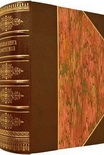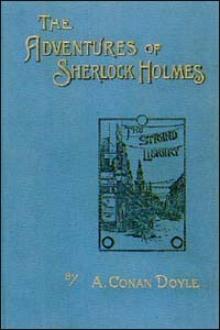My Autobiography, Charles Chaplin [books to read in your 20s .TXT] 📗

- Author: Charles Chaplin
Book online «My Autobiography, Charles Chaplin [books to read in your 20s .TXT] 📗». Author Charles Chaplin
This time I stayed at the Carlton, for it was an older landmark than the Ritz and made London more familiar to me. My suite was exquisite. The saddest thing I can imagine is to get used to luxury. Each day I stepped into the Carlton was like entering a golden paradise. Being rich in London made life an exciting adventure every moment. The world was an entertainment. The performance started the first thing in the morning.
I glanced out of the window of my room and saw several placards down on the street. One read: ‘Charlie is still their darling.’ I smiled, thoughtfully at the connotation. The Press were extremely nice, for in an interview I made quite a faux pas when asked if I intended visiting Elstree. ‘Where’s that?’ I inquired innocently. They looked and smiled at each other, then told me it was the centre of the English film industry. My embarrassment was so genuine that they didn’t take offence.
This second visit was almost as soul-stirring and exciting as the first, and undoubtedly it was more interesting, for I was fortunate in meeting many more interesting people.
Sir Philip Sassoon rang up and invited Ralph and me to several dinners at his town house in Park Lane and his country house at Lympne. We also lunched with him at the House of Commons, where we met Lady Astor in the Lobby. A day or so later she invited us to lunch at No. 1 St James’s Square.
As we entered the reception room, it was like stepping into the Hall of Fame at Madame Tussaud’s – we were confronted with Bernard Shaw, John Maynard Keynes, Lloyd George and others, but all in the flesh. Lady Astor kept the conversation alive with her unfailing resourcefulness until she was suddenly called away, and then there came an embarrassing silence. But Bernard Shaw took over and told an amusing anecdote about Dean Inge, who, expressing his indignation over the teaching of St Paul, said: ‘He so distorted the teachings of our Saviour as metaphorically to crucify Him head downwards.’ This kindness and geniality in helping to keep the ball rolling was most amiable and attractive in Shaw.
During lunch I talked to Maynard Keynes, the economist, and told him that I had read in an English magazine about the functioning of credit in the Bank of England, which then was a private corporation: that during the war the Bank had been drained of its gold reserves, having only £400,000,000 of foreign securities left, and that when the Government wanted a loan of £500,000,000 from the Bank, the Bank merely brought out its foreign securities, looked at them, put them back in the vault, and issued the loan to the Government, and that this transaction was repeated several times. Keynes nodded and said: ‘That is about what took place.’
‘But,’ I asked politely, ‘how were those loans redeemed?’
‘With the same fiduciary money,’ said Keynes.
Towards the end of lunch Lady Astor put in some comedy buck teeth that covered her own and gave an imitation of a Victorian lady speaking at an equestrian club. The teeth distorted her face with a most comical expression. Said she fervently: ‘In our day we British women followed the hounds in proper lady-like fashion – not in the vulgar cross-legged style of those Western hussies in America. We rode side-saddle hard and fast with dignity and womanly comeliness.’
Lady Astor would have made a wonderful actress. She was a charming hostess and I have to thank her for many wonderful parties, which gave me the opportunity of meeting many of the illustrious of England.
After lunch when everyone else had dispersed, Lord Astor took us to see his portrait, painted by Munnings. When we arrived at the studio, Munnings was reluctant to let us in, until Lord Astor earnestly persuaded him to do so. The portrait was of Lord Astor, on a hunter, surrounded by a pack of hounds. I made a hit with Munnings, for I admired several of the preliminary, quick studies he had made of the movement of the dogs as much as the finished portrait. ‘The action is music,’ I said. Munnings brightened and showed me several other quick sketches.
A day or so later we lunched at Bernard Shaw’s. Afterwards G.B. took me into his library – just the two of us – leaving Lady Astor and the other guests in the living-room. The library was a bright cheerful room that looked out on the Thames. And, lo and behold, I found myself confronted with a shelf of Shaw’s books over the mantelpiece, and like a fool, having read little of Shaw, I went over to them with an exclamation of ‘Ah, all your works!’ Then it occurred to me that he might have brought about this opportune moment to explore my mind through discussing his books. I imagined our being so engrossed that the other guests would have to come in and break it up. How I should have liked this to happen. But instead there was a mincing moment of silence as I smiled and turned away and looked about the room and made some banal comment on its cheerfulness. Then we rejoined the other guests.
I met Mrs Shaw several times after that. I remember discussing with her G.B.’s play The Applecart, which had received indifferent reviews. Mrs Shaw was indignant. Said she: ‘I told G.B. he should not write any more plays; the public and the critics don’t deserve them!’
For the next three weeks we were kept busy with invitations. One was from the Prime Minister, Ramsay MacDonald, another from Winston Churchill, others from Lady Astor, Sir Philip Sassoon and so on down the regal line.
I first met Winston Churchill at Marion Davies’s beach-house. About fifty guests were milling about between the ballroom and the





Comments (0)